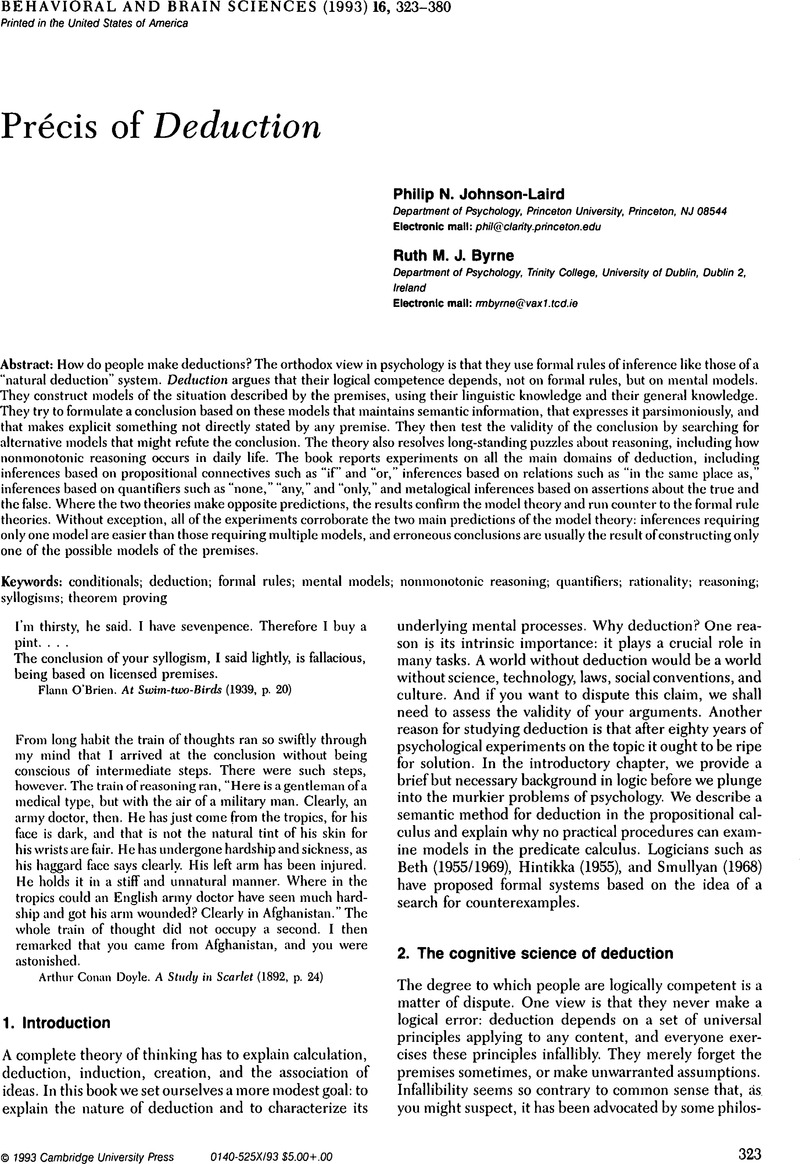Crossref Citations
This article has been cited by the following publications. This list is generated based on data provided by Crossref.
Martin-Cordero, J.
and
González-Labra, M. J.
1994.
Amnesic mental models do not completely spill the beans of deductive reasoning.
Behavioral and Brain Sciences,
Vol. 17,
Issue. 4,
p.
773.
Smith, Leslie
1994.
Mental models and modality.
Behavioral and Brain Sciences,
Vol. 17,
Issue. 4,
p.
774.
Johnson-Laird, P. N.
and
Byrne, Ruth M. J.
1994.
Models, necessity, and the search for counterexamples.
Behavioral and Brain Sciences,
Vol. 17,
Issue. 4,
p.
775.



